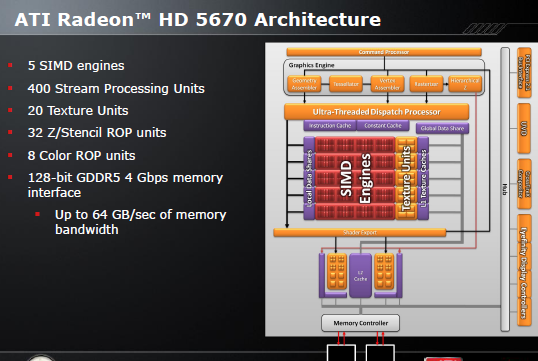Architecture
Fitting inLet's examine where the Radeon HD 5670 fits into AMD's graphics stack.
Here's the roadmap when the Radeon HD 5970 was released in November 2009.
It's clear that to make significant revenue from the new architecture AMD had to pull it apart to fill the $100 space. Radeon HD 5670, then, is the 'Redwood' part, to be followed, soon, by the Radeon HD 5500 and HD 5450 'Cedar' parts.
The aim
AMD's plan is to use the HD 5670 to put increasing pressure on NVIDIA's low-to-mid-range cards - GeForce GT 240 is the newest example - by bringing the salvo of a) 40nm, space-saving architecture and b) a fuller feature-set.
The introduction of the GPU will also sound the curtain call for AMD's mid-range 4-series GPUs, we imagine, especially if the yields for the 5-series 40nm GPUs have increased in the last three months.
Vital stats
So what has AMD done to take a £300-plus Radeon HD 5870 and strip it down such that it makes economic sense for its partners to etail at £70.

Take a look at the HD 5870 architecture here and the tearing-down is significant. Indeed, even compared to the Radeon HD 5770 - the GPU in the next class above, costing £125 right now - cuts are clear and obvious. Ignore the 64-bit memory-controller graphic, by the way, the card ships with a 128-bit-wide bus.
If one considers a Radeon HD 5770 to be half of a HD 5870, then the HD 5670 is almost half of a HD 5770. The SIMD engines drop from 10 to five, stream processors from 800 to 400, texture-units from 40 to 20, and raster back-ends from 16 to eight.










